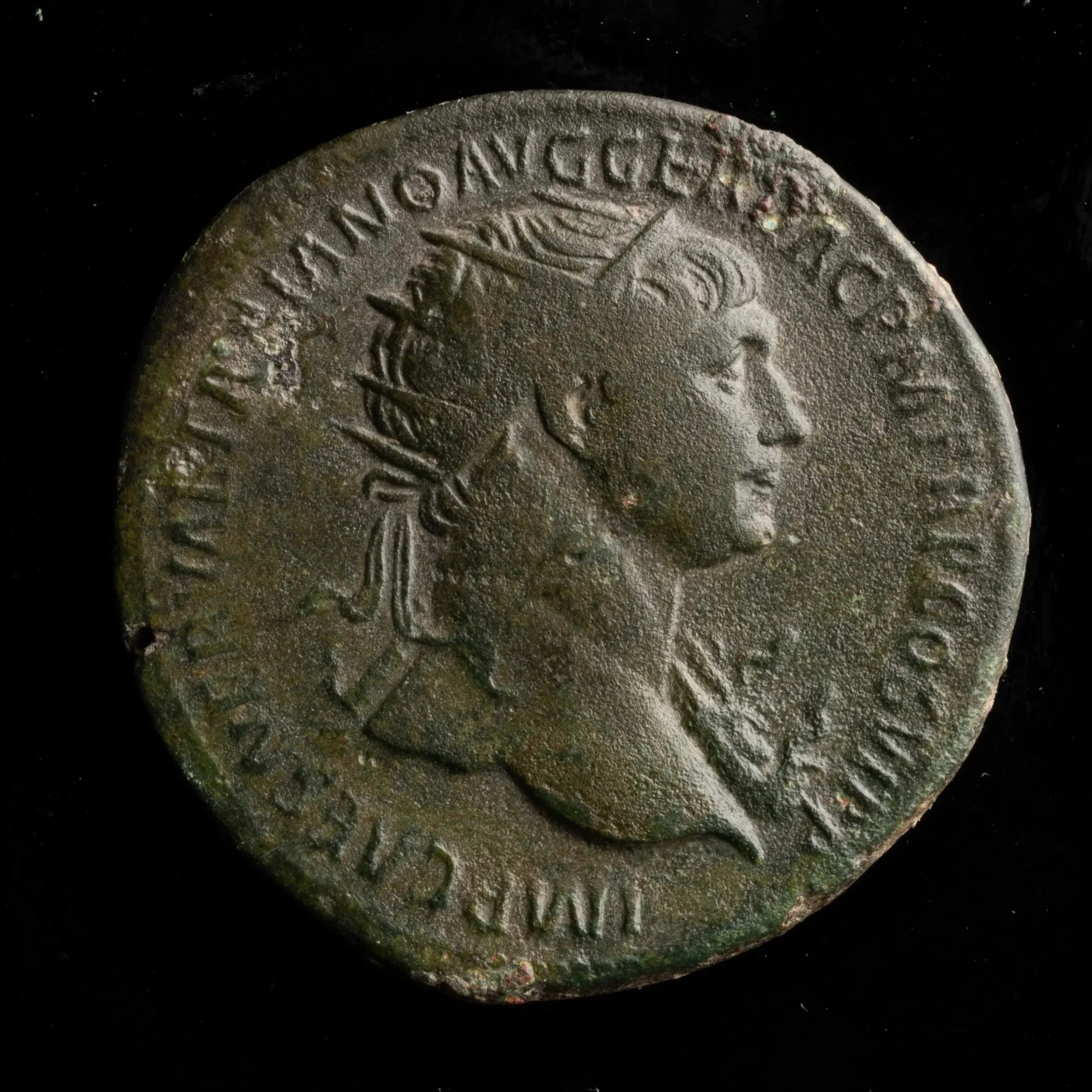 Image 1 of 2
Image 1 of 2

 Image 2 of 2
Image 2 of 2



Byzantine Bronze 6 Solidi Weight (1,500 years ago)
This square bronze weight was used in the Byzantine Empire during the 5th-6th century AD. Such weights were crucial for commerce and tax collection, ensuring accurate measurement of gold coins in a period when the Byzantine economy was standardizing its monetary system.
Description:
Front side: Finely engraved design featuring the letters "NS" and a Christian cross enclosed within a decorative wreath.
Back side: Plain backing typical of Byzantine weights of this period.
Technical Details:
Material: Bronze with silver inlay
Function: Official 6 solidi weight (used to verify the weight of gold coins)
Size: 23mm x 23mm x 6mm
Period: 5th-6th century AD (Early Byzantine period)
Decorative Elements: Silver inlaid letters N and S containing smaller N and S
Historical Significance:
This weight represents the sophisticated Byzantine administrative system that maintained careful control over commerce and taxation throughout the eastern Mediterranean region. The inclusion of the Christian cross symbolizes the integration of Christianity into official government functions and everyday commercial life in the Byzantine Empire (Eastern Roman Empire). Such meticulously standardized weights were vital to the empire's economic stability during a time when precious metal content determined a coin's true value, helping to prevent fraud and ensure fair trade across the vast territories spanning modern-day Turkey, Greece, and parts of North Africa and the Middle East.
This square bronze weight was used in the Byzantine Empire during the 5th-6th century AD. Such weights were crucial for commerce and tax collection, ensuring accurate measurement of gold coins in a period when the Byzantine economy was standardizing its monetary system.
Description:
Front side: Finely engraved design featuring the letters "NS" and a Christian cross enclosed within a decorative wreath.
Back side: Plain backing typical of Byzantine weights of this period.
Technical Details:
Material: Bronze with silver inlay
Function: Official 6 solidi weight (used to verify the weight of gold coins)
Size: 23mm x 23mm x 6mm
Period: 5th-6th century AD (Early Byzantine period)
Decorative Elements: Silver inlaid letters N and S containing smaller N and S
Historical Significance:
This weight represents the sophisticated Byzantine administrative system that maintained careful control over commerce and taxation throughout the eastern Mediterranean region. The inclusion of the Christian cross symbolizes the integration of Christianity into official government functions and everyday commercial life in the Byzantine Empire (Eastern Roman Empire). Such meticulously standardized weights were vital to the empire's economic stability during a time when precious metal content determined a coin's true value, helping to prevent fraud and ensure fair trade across the vast territories spanning modern-day Turkey, Greece, and parts of North Africa and the Middle East.











